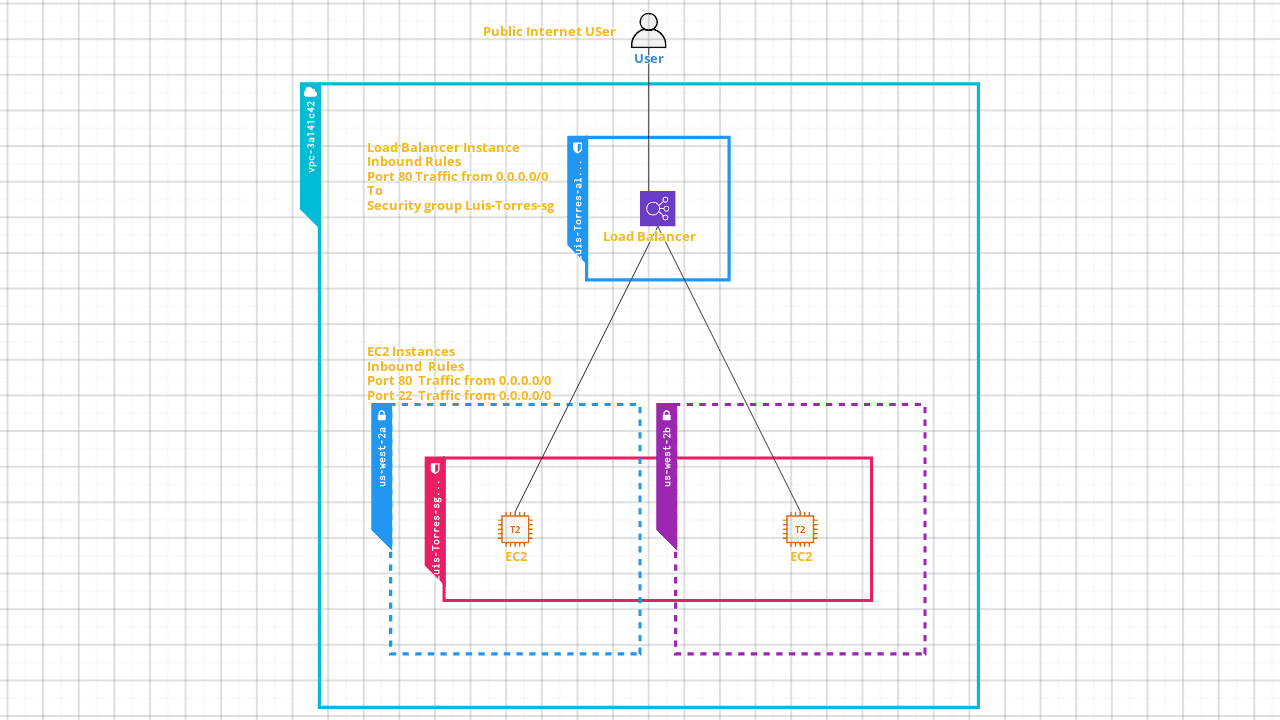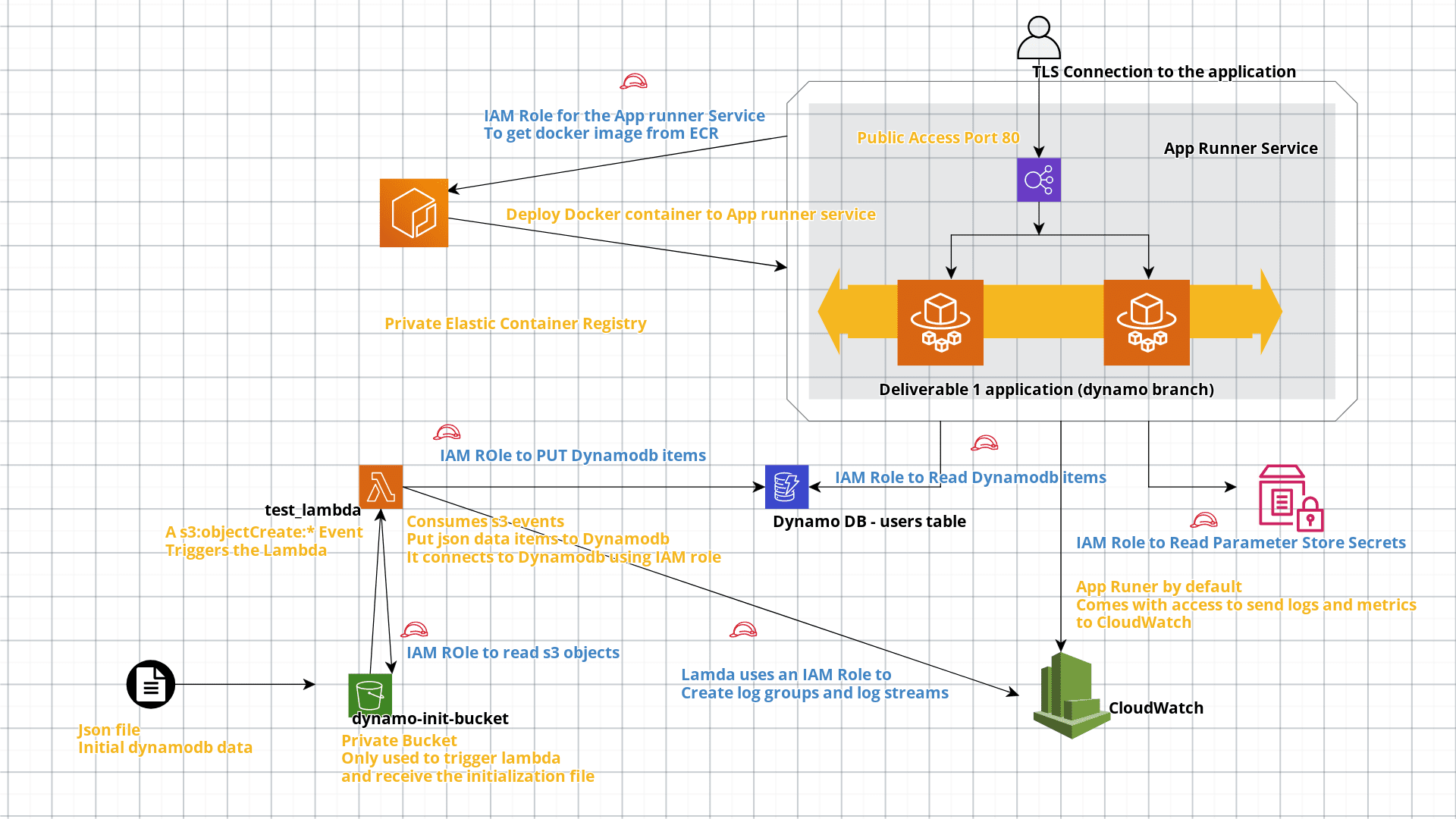The purpose of this repo is to describe the work done for the SRE-BOOTCAMP - deliverable2
- The initial infrastructure diagram.
- The diagram of the infrastructure that you developed.
- The improvements that you implemented, as well as a logical and reasonable justification for your improvements.
- The ownership of creating the infrastructure.
- The functionality of the application.
- The correct functioning of the application.
The initial application is a web application which returns the following message when the port 80 is reached
Welcome to the 2nd part of your Capstone Project!
To serve the application there is a load balancer in front of two static instances of EC2 with the application.
The user can reach directly both instances which have public access to the following ports:
- 80 -- for web application
- 22 -- for ssh
Possible improvements to the initial infrastructure:
- Improve scalability of the web application
- Reduce/remove the public facing traffic to the applications that is not needed
- Implementation of security best practices to access cloud services
For my implementation I have prefered the use of serverless [1] resources because of the following reasons:
- Easier scalability capabilities
- The actual cost depends on the demand of the application
- The underlaying infrastructure and configuration is administered by AWS
- The access to different resorces can be managed only using IAM roles [2]
- S3 bucket
- Lambda
- Secret manager
- Elastic Container Registry
- App Runner
- DynamoDB
- cloudcraft (for diagrams)
App Runner[3] is a rather new service from AWS, it enables the deployment of source code from github or docker images from ECR to a self managed ECS cluster. It is actually using Fargate in the background. Main advantages:
- Easier to configure/use in comparison to fargate or ECS.
- TLS connection by default for the deployed application.
- Reduced vendor locking if you are using docker containers.
- Automatic autoscale from the app runner service configuration.
- Automaticly load balanced.
- The only way to provide access to aws service is using IAM roles.
Disadvantages:
- A bit more expensive in comparison to ECS.
- It can't be scaled to a 0 instance like Google Cloud Run. [4]
- It can't access all the AWS services as off now.
- Can't be configured using VPC.
For me the main advantage is the default TLS connection to ensure security by default, the same applies to the use of the IAM roles.
I am using the application from the deliverable 1, the difference is that I have created a branch to consume DynamoDB, and retrieve the JWT encryption key from AWS parameter store.
- The docker image used for this implementation is - latoz/academy-sre-bootcamp-luis-torres:dynamo.
- All the infrastructure was described using a terraform template.
- The application was deployed using app runner, the initial autoscaling configuration only creates 2 instances.
- Any access to the services is described uing IAM policies and Roles.
- The S3 bucket is only used to initialize the database:
- It has a lambda trigger when a new file is uploaded, that file has the data from the wizeline database used by the deliverable 1.
- When the lambda is triggered it takes the json file from the s3 bucket and then puts the items to dynamodb.
All the created resources have the following tags:
- project = "deliverable2"
- mentee = "LuisAngelTorres"
- After the data is initialized and actually stored in the dynamodb I am not removing the no longer resources
- Clone this repository
- change if needed the terraform aws provider block from main.tf
terraform init
terraform apply
The entire deployment takes around 5-8 minutes to complete The last output line from terraform is the link to the application
[1] https://www.cloudflare.com/learning/serverless/why-use-serverless/
https://aws.amazon.com/es/serverless/
[2] https://docs.aws.amazon.com/es_es/IAM/latest/UserGuide/id_roles.html
[3] https://aws.amazon.com/apprunner
[4] https://cloud.google.com/run/docs/about-instance-autoscaling

